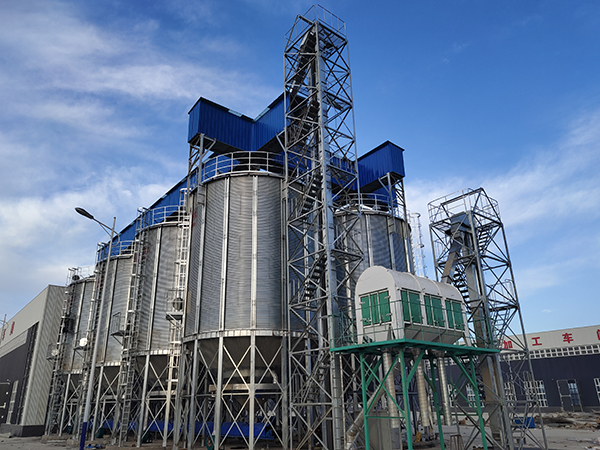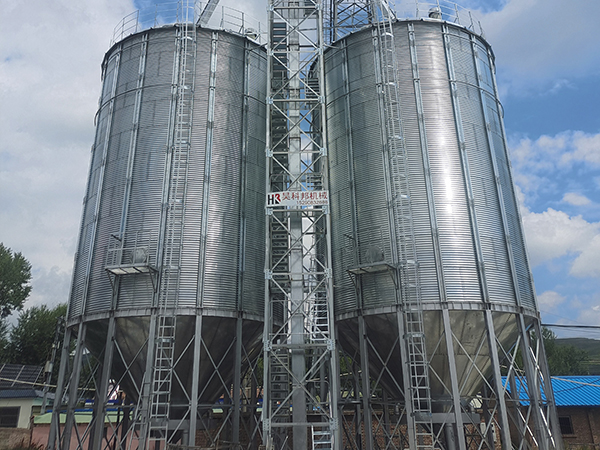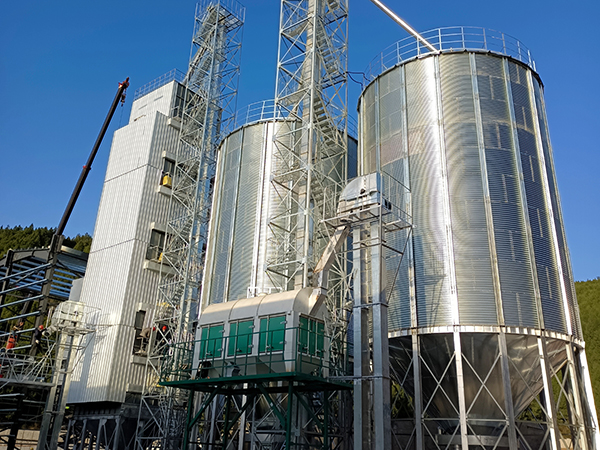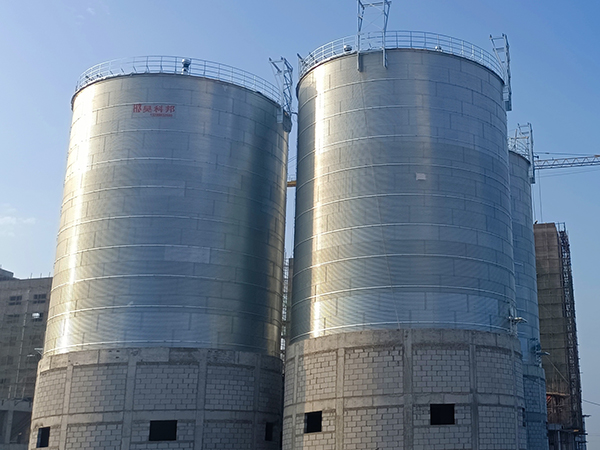How to Choose a Paddy Cone Bottom Silo
Paddy cone bottom silos are versatile for storing a range of materials, including various grains and animal feed, ensuring quality and safety. They feature a conical bottom for efficient discharge, a galvanized steel body for durability, and protection measures against weather elements, with a focus on pre-storage preparation for optimal preservation.
- Barley grain bin company in Tanzania
- rice grain bin factory in Rwanda
- Paddy grain bin supplier in Guinea
- Wheat Cone-Bottom Silo Franchise in Thailand
- Wheat cone bottom silo procurement in Thailand
- Wholesale Wheat Cone-Bottom Silo in Malaysia
- Manufacturers of Wheat Cone-Bottom Silo in Malaysia
- Wheat Cone-Bottomed Silo Suppliers in Uganda
- Cone-Bottom Wheat Silo Sales in Uganda
- Wheat cone bottom silo price in Uganda
- Soybean meal grain bin sale in Guinea
- Corn grain bin price in Libya
Paddy cone bottom silo, with their unique design and efficient storage capabilities, are widely used for the preservation of various materials. These silos are not limited to paddy storage but also adapt to the storage needs of multiple grain crops and other products.
Material Storage Range of Paddy cone bottom silo
Initially designed for paddy storage, paddy cone bottom silo are also suitable for corn, wheat, and other grain crops. These silos provide a dry, well-ventilated environment, maintaining crop quality and extending shelf life.
Beyond grain crops, paddy cone bottom silo are ideal for storing soybean meal and animal feed. These materials are effectively protected from moisture and contamination, ensuring nutritional value and safety.
Design Principles of Paddy cone bottom silo
Paddy cone bottom silo are storage facilities specifically designed for grain crops. Their structure is meticulously crafted for efficient and reliable storage performance.
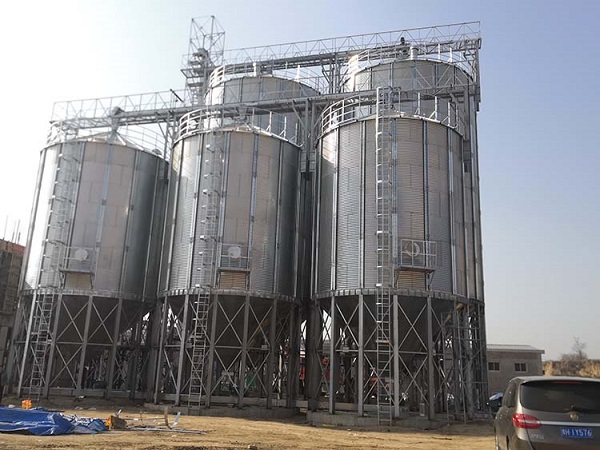
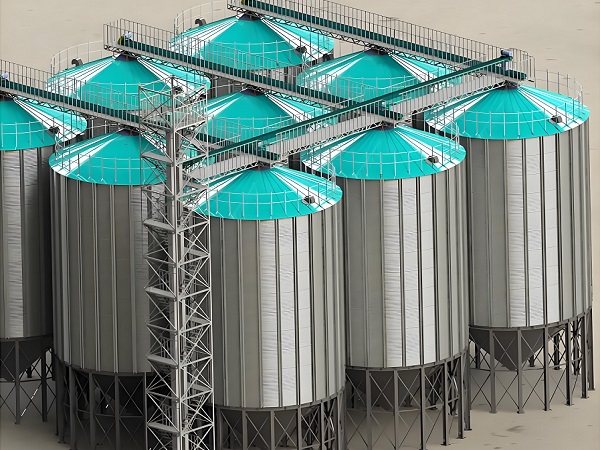
Conical Bottom
The conical bottom is key for material discharge, supported by sturdy external columns. These columns adjust based on silo size and capacity, ensuring sufficient support. For larger silos, thicker and more columns accommodate greater weight-bearing needs. The angle of the conical bottom is flexible, typically determined by the material’s flowability—45 degrees for rice, corn, and wheat with good flow, and 60 degrees for less flowable soybean meal and animal feed.
Silo Body Features
The silo body, the main part of the silo, is made of high-quality galvanized steel plates. To withstand varying pressures from grain flow, the plate thickness increases from top to bottom, ensuring the bottom bears greater weight.
Protection Measures at the Silo Top
The silo top features a conical structure with a 30-degree angle, preventing rainwater penetration and snow load pressure. The top structure considers both protection and drainage efficiency, ensuring silo safety and stability in harsh weather.
Preparations for Paddy Before Entering the Silo
Before paddy storage, a series of preparations ensure a smooth storage process and protect paddy quality.
Weight Measurement
Firstly, paddy is weighed using a ground scale for accurate recording and subsequent inventory management and cost accounting.
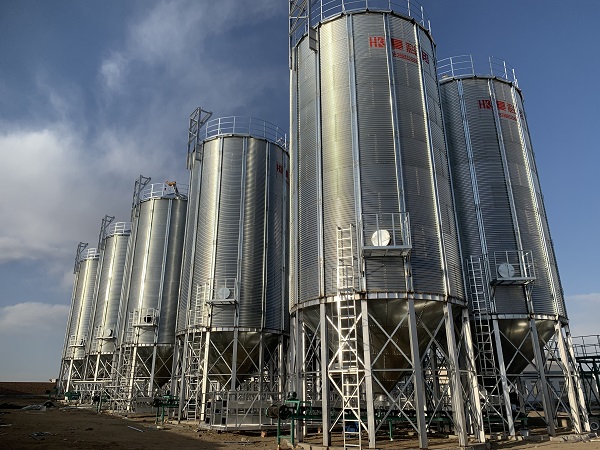
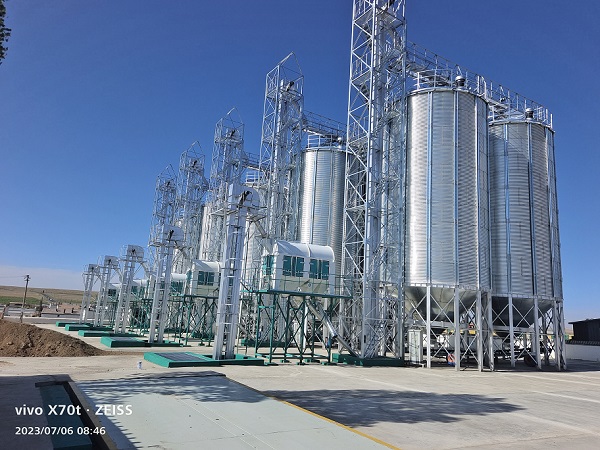
Unloading Preparation
After measurement, paddy is transported to the unloading pit for concentration and preparation for the next cleaning step.
Impurity Removal
To ensure cleanliness and quality, paddy undergoes screening. Cleaning screens and machinery effectively remove larger impurities and dust. Parameters are adjusted based on paddy cleanliness and storage requirements for optimal results.
Conveying into Silo
Cleaned paddy is then conveyed into the silo via elevators and conveyors.
Through these preparations, paddy can be safely and efficiently stored, maintaining its quality. For grain storage needs, please contact us!

